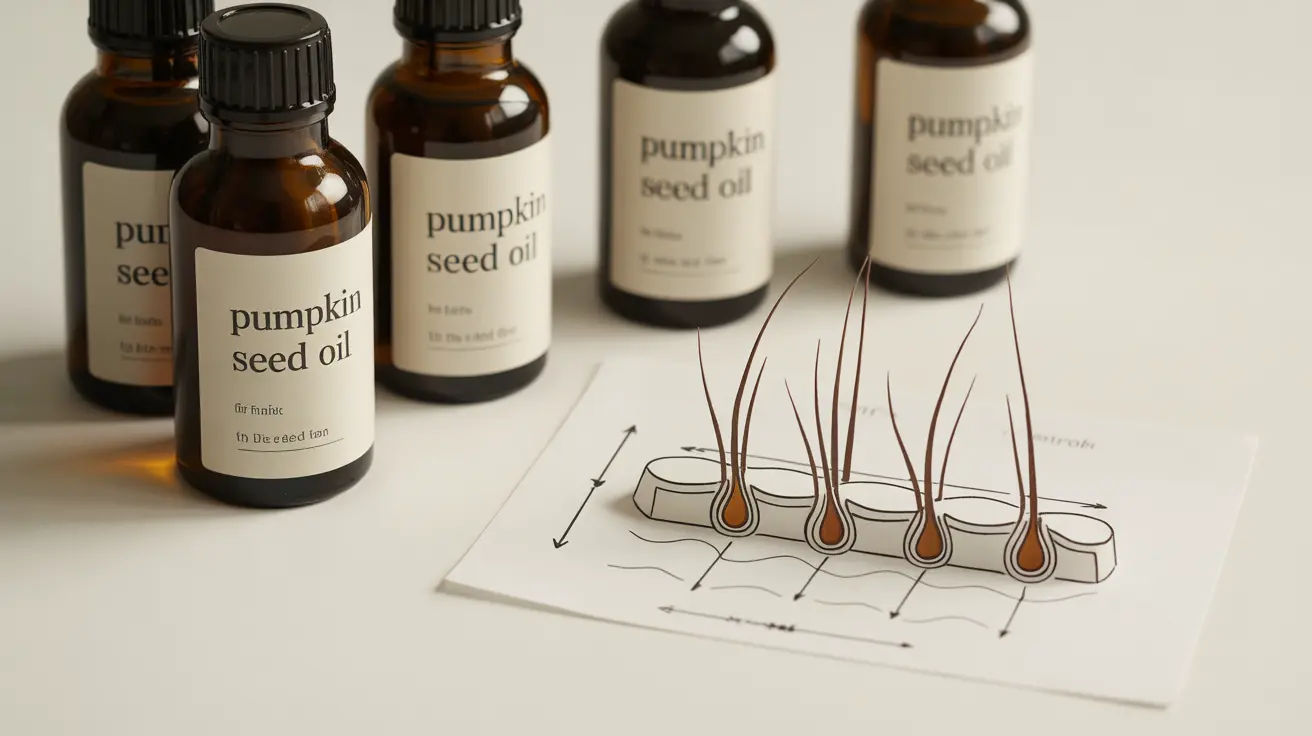For those struggling with hair loss, finding natural solutions backed by scientific research is increasingly important. Pumpkin seed oil has emerged as a promising natural remedy for hair loss, supported by clinical studies and rich in nutrients that may benefit hair health. This comprehensive guide explores how pumpkin seed oil could help with hair loss and the best ways to use it.
Understanding Pumpkin Seed Oil's Benefits for Hair
Pumpkin seed oil contains several compounds that may help combat hair loss, including phytosterols, essential fatty acids, and powerful antioxidants. These nutrients work together to potentially block DHT (dihydrotestosterone), a hormone linked to pattern hair loss, while providing nourishment to hair follicles.
The Science Behind Pumpkin Seed Oil and Hair Growth
Research suggests that pumpkin seed oil's effectiveness for hair growth stems from its rich nutrient profile, which includes:
- Delta-7 sterine (blocks DHT production)
- Essential fatty acids (promotes scalp health)
- Zinc and iron (supports healthy hair growth)
- Antioxidants (protects follicles from damage)
Clinical Evidence Supporting Hair Growth
A notable 24-week study showed that men taking pumpkin seed oil supplements experienced a 40% increase in hair count compared to those taking a placebo. This research provides compelling evidence for its potential in treating pattern hair loss.
Methods of Using Pumpkin Seed Oil for Hair
Oral Supplementation
Taking pumpkin seed oil internally appears to be the most scientifically supported method for hair growth benefits. The recommended dosage typically ranges from 1,000 to 2,000 mg daily, taken with meals for optimal absorption.
Topical Application
While less studied than oral supplementation, topical application may provide additional benefits:
- Mix with carrier oil for scalp massage
- Add to hair masks
- Use as a pre-shampoo treatment
Timeline and Expected Results
Results from using pumpkin seed oil for hair loss typically require patience and consistency. Most studies show notable improvements after 3-6 months of regular use, though individual results may vary based on various factors including the underlying cause of hair loss.
Safety Considerations and Side Effects
Pumpkin seed oil is generally considered safe for most people, including women. However, it's important to be aware of potential considerations:
- Always perform a patch test before topical use
- Consult healthcare provider if taking blood-thinning medications
- Start with lower doses to assess tolerance
- Discontinue use if any adverse reactions occur
Frequently Asked Questions
Does pumpkin seed oil really help reduce hair loss and promote hair growth?
Yes, scientific research supports pumpkin seed oil's ability to help with hair loss, particularly in cases of androgenetic alopecia. Clinical studies have shown significant improvements in hair count and thickness with regular use.
How does pumpkin seed oil work to prevent hair thinning or baldness?
Pumpkin seed oil works primarily by blocking DHT production and providing essential nutrients for hair growth. Its combination of phytosterols, fatty acids, and minerals supports overall scalp health and follicle function.
What is the recommended way to use pumpkin seed oil for hair, and how long does it take to see results?
The most studied method is oral supplementation of 1,000-2,000 mg daily. Results typically become noticeable after 3-6 months of consistent use, though some may see improvements sooner.
Is pumpkin seed oil safe to use for women, and are there any known side effects?
Pumpkin seed oil is generally safe for women to use. Side effects are rare but may include digestive discomfort when taken orally or skin sensitivity with topical use. Always start with a small amount to test tolerance.
Can pumpkin seed oil be applied topically on the scalp, or is oral supplementation more effective for hair loss?
While both methods can be beneficial, research more strongly supports oral supplementation for hair loss treatment. Topical application may provide additional benefits but should be considered complementary to oral use rather than a replacement.




